Safety Management Systems (SMS) was not a thing in the past. But if you look back over the last four decades in the construction industry, a lot has changed.
In the 1970s, it was simpler and probably cheaper just to pay a fine than support the safety of the workforce through training, equipment, and process improvement. Now, safety is of utmost importance.
Find out why focusing on construction safety management can result in positive outcomes for your projects.
Construction Safety Management: Less Risk; More Reward
Construction safety has undergone a systemic overhaul in the last few decades to create a culture that values the employee over the profit. This culture creates a more enticing career opportunity for those coming into the industry.
Safety culture generates more for companies than just goodwill with employees. Safer jobs keep insurance premiums down, create better customer satisfaction, and create a better jobsite for all trades. The key to creating a strong safety culture is to manage risk and empower employees.
Managing Risk
Managing risk boils down to two key areas:
- General Safety Awareness
- Hazard Analysis and Mitigation
1. General Safety Awareness
The Occupational Safety and Health Administration (OSHA) offers an entire catalog of safety courses. If you are not a professional in the safety world, it can be daunting to sort through all the options. Start by thinking about the general awareness needed by all employees, especially those in the field, and follow up with items that are more specific to your trade.
General Courses
At the minimum, general safety awareness can be garnered from the completion of a course like OSHA 10. Oftentimes, this course is seen as the only general awareness course necessary for entry-level employees.
However, an introduction to a safety mindset that is unique and specific to your organization complements the 10-hour general course with the specifics you find to be most important. As craft workers progress through their careers, increasing their knowledge of general issues in safety and how to lead safety programs is critical.
Safety leadership courses and safety for supervisors can be sourced through OSHA or community colleges, union halls, or community-based training organizations. However, once you source the information, it is critical that all employees speak the same safety language and understand how to spot hazards and manage risk for themselves and their teams.
Specific Courses
Each trade will need specific courses that apply to their work in order to create a safe working environment for the craft workforce. Staying engaged in safety education should be a primary method for keeping safety awareness at the forefront of all construction workforce.
Additionally, as each job is being prepped and the workforce assigned, it is necessary to check the credentials and certifications that are necessary to complete the job. Keeping on top of safety training and ensuring that each time a competent person is provided for the jobsite is critical. A little extra specialized safety training reduces risk significantly for the entire project.
2. Hazard Analysis and Mitigation
Beyond training, it is critical that all employees are able to identify potential hazards and plan to reduce risk in their work through mitigation or elimination of the hazard.
As work begins each day, it is important that the focus starts with safety. For this reason, as safety management systems have been designed and implemented, job hazard analysis (JHA) or job safety analysis (JSA) have become best practice.
Start each shift with a review of the planned work, the potential hazards, and the correct options for reducing risk. Then, discuss the plan with the entire team. This effort will create a sense of being valued by each other and the company.
Trade partners that do not utilize the JHA/JSA process are missing a critical step that creates a safety culture inside their company. Having everyone on the same page before work begins sends people home safely and willing to return to work the next day.
Empower Employees
Safety is personal, and it is corporate. Safe job sites are the responsibility of everyone present. However, there is a hierarchy in the workforce that sometimes keeps individuals from feeling empowered to stop work when they see issues for fear of being wrong or retaliation or even lost time in production.
When we fail to give employees the power to stop work (Stop Work Authority or SWA), we communicate that they are not valuable and that their expertise and observations are devalued. Giving employees the right and encouraging them to own the safety of their jobs is a powerful tool for creating engaged and loyal employees.
Empowering employees also trickles out in the community. The general population will see safe workers performing jobs in the public eye, increasing the reputation of construction work as respectable work performed by highly skilled workers.
Build Your Safety Programs With C3
From our inception, Construction Career Collaborative (C3) has seen that safety is key to raising the playing field for our workforce. Creating a pipeline of employees for the craft trades requires that the employers have safety and skills training at the forefront of all they do.
We have developed a set of safety modules that can be used on jobsites to refresh the safety mindset on general safety awareness. Additionally, our safety committee has created a basic JHA for use by anyone who doesn’t have their own format.
Safety is critical to job performance. You can create a safe culture in your company that your employees want and deserve.
Want to help us plan the next set of safety support services to be offered by C3? Find out how to join our safety committee to help us lead the way in supporting construction safety management.

